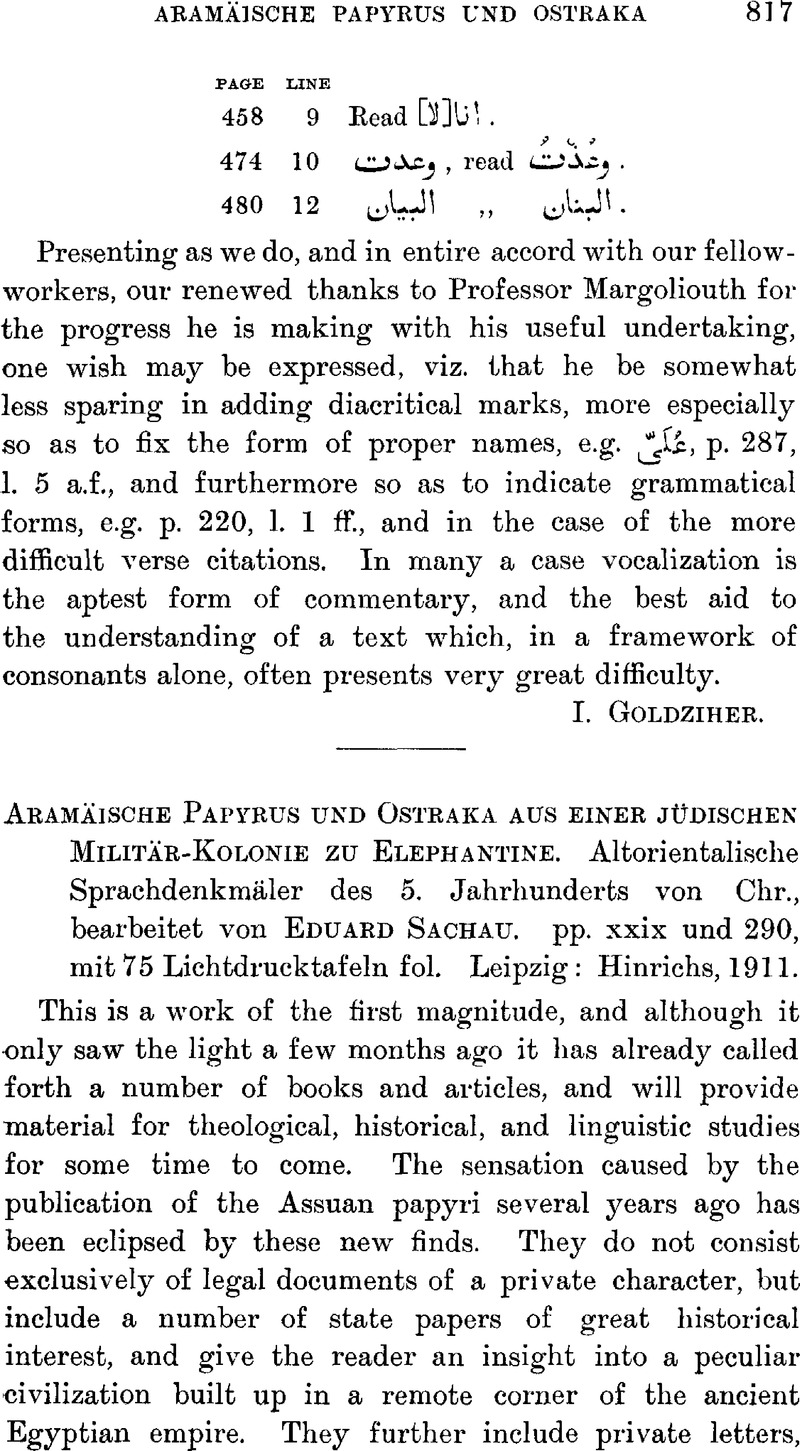No CrossRef data available.
Article contents
Aramäische Papyrus und Ostraka aus Einer Jüdischen Militär-Kolonie zu Elephantine. Altorientalische Sprachdenkmäler des 5. Jahrhunderts von Chr., bearbeitet von Eduard Sachau. pp. xxix und 290, mit 75 Lichtdrucktafeln fol. Leipzig: Hinrichs, 1911.
Published online by Cambridge University Press: 15 March 2011
Abstract

- Type
- Notices of Books
- Information
- Copyright
- Copyright © The Royal Asiatic Society 1912
References
page 818 note 1 The Expositor, January, 1912, pp. 69 sqq., but see Mr. St. A. Cook's article in the March number of the same journal; Expository Times, March, 1912, p. 235.
page 819 note 1 The worship of Jāhō alone, unsupported by other evidence, would be no absolute proof of monotheism. The name occurs in old Semitic characters on a coin from Gaza, recently shown by Mr. G. F. Hill in a paper on “Some Palestinian Cults in the Græco-Roman Age” read before the British Academy, and shortly to be published.
page 821 note 1 In pap. 12, 1. 3 he is styled ![]()
page 822 note 1 But not in the sense of “dogs” as “humble slaves of the gods”, as Cooke (Text Book of North Semitic Inscriptions, p. 68) suggests.
page 823 note 1 The word ![]() (1. 2) has been left unexplained by Professor Sayoe. It can only be the imperative Pe'al of
(1. 2) has been left unexplained by Professor Sayoe. It can only be the imperative Pe'al of ![]() “to puncture” (but not “to cut” as Dr. Daiches suggests in PSBA., January, 1912), and probably refers to the practice of pricking small holes in the flattened dough of the “bread” mentioned in the same line. If this be so, the first two lines relate to the preparation of the maşşōth. The custom of pricking holes in the dough is still observed, in order to allow the heat of the oven to penetrate the dough as rapidly as possible and to bake it before it has time to become leavened.
“to puncture” (but not “to cut” as Dr. Daiches suggests in PSBA., January, 1912), and probably refers to the practice of pricking small holes in the flattened dough of the “bread” mentioned in the same line. If this be so, the first two lines relate to the preparation of the maşşōth. The custom of pricking holes in the dough is still observed, in order to allow the heat of the oven to penetrate the dough as rapidly as possible and to bake it before it has time to become leavened.
page 824 note 1 “Alter und Herkunft des Achikar-Romans und sein Verhältniss zu Aesop,” p. 116 (Beihefte zur ZAW. xiii).
page 825 note 1 No. 2,760, see p. 528 of this Journal.




